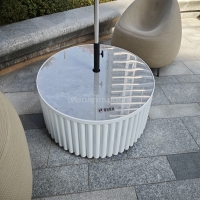Welcome to the website for landscape facilities products and knowledge.
How do composite materials perform in reducing thermal expansion-related cracks?
Composite materials have revolutionized modern engineering by addressing one of the most persistent challenges: thermal expansion-related cracks. These materials, composed of two or more distinct constituents, combine the best properties of their components to minimize the adverse effects of temperature fluctuations.
The key to their performance lies in their tailored thermal expansion coefficients. By carefully selecting and bonding materials with complementary properties—such as carbon fibers embedded in a polymer matrix—composites can achieve near-neutral thermal expansion. This means they expand or contract minimally under temperature changes, significantly reducing stress buildup that leads to cracking.
Additionally, composites often exhibit high strength-to-weight ratios and excellent fatigue resistance. Their layered or fibrous structures help distribute thermal stresses evenly, preventing localized cracking. For example, in aerospace applications, carbon-fiber-reinforced polymers maintain structural integrity despite extreme temperature swings during flight.
Innovations like nano-enhanced composites further improve crack resistance. Nanoparticles or nanotubes added to the matrix create microstructures that absorb and dissipate thermal energy, enhancing durability. As industries demand lighter, stronger, and more reliable materials, composites continue to set new standards in thermal management and crack prevention.
Related search:

Recommendation
Round metal tube border design table with tempered glass or granite countertop on the top.